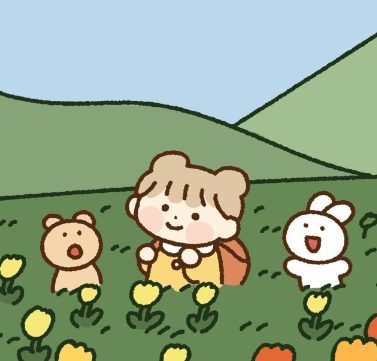[Paper Review] ScreenStyle: Manga Filling Style Conversion with Screentone Variational Autoencoder 논문 리뷰
업데이트:
- Paper:
ScreenStyle: Manga Filling Style Conversion with Screentone Variational Autoencoder (SIGGRAPH Asia 2020): paper, project, code - GAN-Zoos! (GAN 포스팅 모음집)

- We propose a novel variational model, ScreenVAE, to characterize the local texture property at a single point, without the interference of boundary and overlapping fine details, as an interpolative ScreenVAE feature map.
- With the ScreenVAE unifying the property of screentone and color, we propose to learn and convert between screening and color-filling styles.
- The proposed ScreenVAE effectively simplifies the complex patterns in manga, and assists manga inpainting effectively.
ScreenStyle

- ScreenVAE
ScreenEncoder(SE): screened manga image를 Input $I_m$ 으로 받아 intermediate ScreenVAE map $I_s$ 을 생성- intermediate Screen VAE map $I_s$ : 이미지의 texture 정보를 담고 있는 feature map, 특정 픽셀의 주변부에 있는 local neighborhood의 texture 특징까지를 encoding
- 이미지의 content나 region semantics을 추출해내는 part
ScreenDecoder(DE): ScreenVAE map $I_s$ 을 다시 screened manga $I’_m$ 로 decoding- 이미지에 screentone을 입히는 부분
- dataset에 있는 다양한 screentone을 표현할 수 있음
multi-scale design- ScreenEncoder, ScreenDecoder 모두 multi-scale로 디자인하여 이미지의 content region을 잘 뽑아낼 뿐만 아니라 특정 region의 screentone이 일정할 수 있도록 함
- Bidirectional Translation Model
- screen manga domain과 color comic domain간의 자유로운 translation이 가능하도록 하는 모델
Screen2Color G: ScreenVAE map $I_s$ 을 color comic $I_{s arrow c }$ 으로 변환Color2Screen G: color comic $I_{s arrow c }$ 을 ScreenVAE map $I_s$ 으로 변환- cycle-consistency하게 두 도메인간의 변환이 잘되도록 저자들은 adv-loss 기반의 tailored bidirectional style translation model를 제안하였음
- ScreenEncoder와 ScreenDecoder를 함께 사용하면 흑백의 manga image가 생성되고
- ScreenEncoder와 Screen2Color를 함께 사용하면 color comics image가 생성됨
ScreenVAE
Network Architecture

- The ScreenVAE map has the same resolution as the input manga.
- Each pixel in the ScreenVAE map summarizes the texture characteristics of a local neighborhood in the input manga within the receptive field
- 실험을 해보니 ScreenVAE maps은 4 channel이면 충분하다고 함
ScreenEncoder- downscaling-upscaling network with 6 residual blocks
ScreenDecoder- 5-level U-net structure with strided de-convolutional operations
- structure를 잘 유지하면서도 다양한 scale의 screentone 생성이 가능해짐
Objectives
\[\mathcal{L}_{\text {scr }}=\lambda_{\text {rec }} \mathcal{L}_{\text {rec }}+\lambda_{\text {spp }} \mathcal{L}_{\text {spp }}+\lambda_{z} \mathcal{L}_{z}+\lambda_{\mathrm{adv}} \mathcal{L}_{\mathrm{adv}}\]- Reconstruction Loss
- Input Manga $I_m$과 recon manga $R_m$ 이 비슷하도록 강제하는 loss
- decoder SD 가 잘 학습되도록 도와주는 term
-
pixel-wise mean square error (MSE) loss
\[\mathcal{L}_{\text {rec }}=\mathbb{E}_{I_{m} \sim \mathcal{I}_{m}}\{\|R_{m}-I_{m}\|_{2}\}\]
- Superpixel Loss
- ScreenVAE map $I_s$ 이 input manga의 texture를 잘 encoding하도록 도와주는 term, 이때 region 별로 tone이 일정해야함
- To extract constant-tone regions
- total-variation based smoothing → input manga의 tonal intensity map $I_t$ 를 얻음
- tonal intensity map $I_t$ 에 simple linear iterative clustering (SLIC)를 적용하여 super-pixel map $I_{spp}$ 를 얻음
- super-pixel map $I_{spp}$ 를 얻기 위해 superpixel pooling network(SPN)을 사용했으며, 이를 통해 region representation이 uniform하게 만들었다.
- regional texture feature variances를 추정해서 super-pixel map $I_{spp}$ 에서 다양한 tone의 region이 나오는 것을 제거
- 만약 두 영역간의 tone은 같지만 texture가 다르다면, super-pixel map $I_{spp}$ 에서 두 superpixel을 분리
-
Loss
\[\mathcal{L}_{\mathrm{spp}}=\mathbb{E}_{I_{m} \sim I_{m}}\{w_{l}\|I_{s}-\operatorname{Superpixel}(I_{s}, I_{\mathrm{spp}})\|^{2}\}\]

- KL Regularization Loss
- ScreenVAE map이 normally distribute하도록 정규화해주는 term
- Adversarial Loss
- 위의 세 loss만 사용하면 이미지가 blurry하게 생성됨
- clear하고 screentone이 잘 뽑히는 이미지를 생성하기 위해 adv-loss를 사용
- Discrimator $D_{sr}(R_m)$ with 4 strided downscaling blocks
- WGAN-gp을 채택하여 훈련의 안정성을 높임
- $\hat{I}_{m}$ : image $I_m$와 $R_m$ 을 linearly interpolate
ScreenVAE는 manga image를 dense한 pixel-wise ScreenVAE map으로 잘 translate
- 이 ScreenVAE map는 local neighborhood를 고려하여 이미지의 texture를 encoding하며,
- interpolation이 가능하기 때문에 dataset에서 보지 못했던 high-quality의 screentone 생성이 가능

Bidirectional Style Translation
Network Architecture
- paired dataset 없이 두 도메인간의 translation을 자유롭게 하기 위해 unsupervised learning
- CycleGAN과 비슷하게 bidirectional translation model을 도입
- 2개의 generator:
Screen2Color G,Color2Screen G - 7-level U-net structure
- 각 level은 2개의 conv block(conv + normalization + ReLU)로 구성되어있음
- style extractor $E_{st}$
- 로 style vector $v_r$ 를 추출한 후 이를 hint로 사용하기 위해
Screen2Color G에 주입 (by AdaIN) - reference image $I_r$ 와 output color comic image $G_{m2c}(I_s,v_r)$ 가 비슷한 color composition을 가지도록 강제
- style vector를 따로 사용하지 않고 random vector를
Screen2Color G에 넣어줘도 colorful comics image가 생성됨 - 5 strided downscaling blocks and FC layer
- 로 style vector $v_r$ 를 추출한 후 이를 hint로 사용하기 위해
- 2개의 generator:
Objectives
\[\begin{aligned}\mathcal{L}_{\mathrm{bi}}=& \alpha_{\mathrm{cyc}}(\mathcal{L}_{\mathrm{cyc}}^{c}+\mathcal{L}_{\mathrm{cyc}}^{s})+\alpha_{\mathrm{GAN}}(\mathcal{L}_{\mathrm{GAN}}^{c}+\mathcal{L}_{\mathrm{GAN}}^{s})+\alpha_{\mathrm{sty}} \mathcal{L}_{\mathrm{sty}}+\alpha_{\mathrm{kl}} \mathcal{L}_{\mathrm{kl}}\end{aligned}\]- Bidirectional Cycle-Consistency Loss
- color → screen → color
- screen → color → screen
- Adversarial Loss
- high-quality의 color comics & screen manga image가 생성되도록 도와주는 term
- Style Loss
- 생성된 color comic 이미지가 reference image의 style과 비슷하도록 style loss 사용
- style feature는 illustration2vec network $\phi$ 로 추출했다고 함
- Style Regularization Loss
- style vector를 normalize
Results



댓글남기기